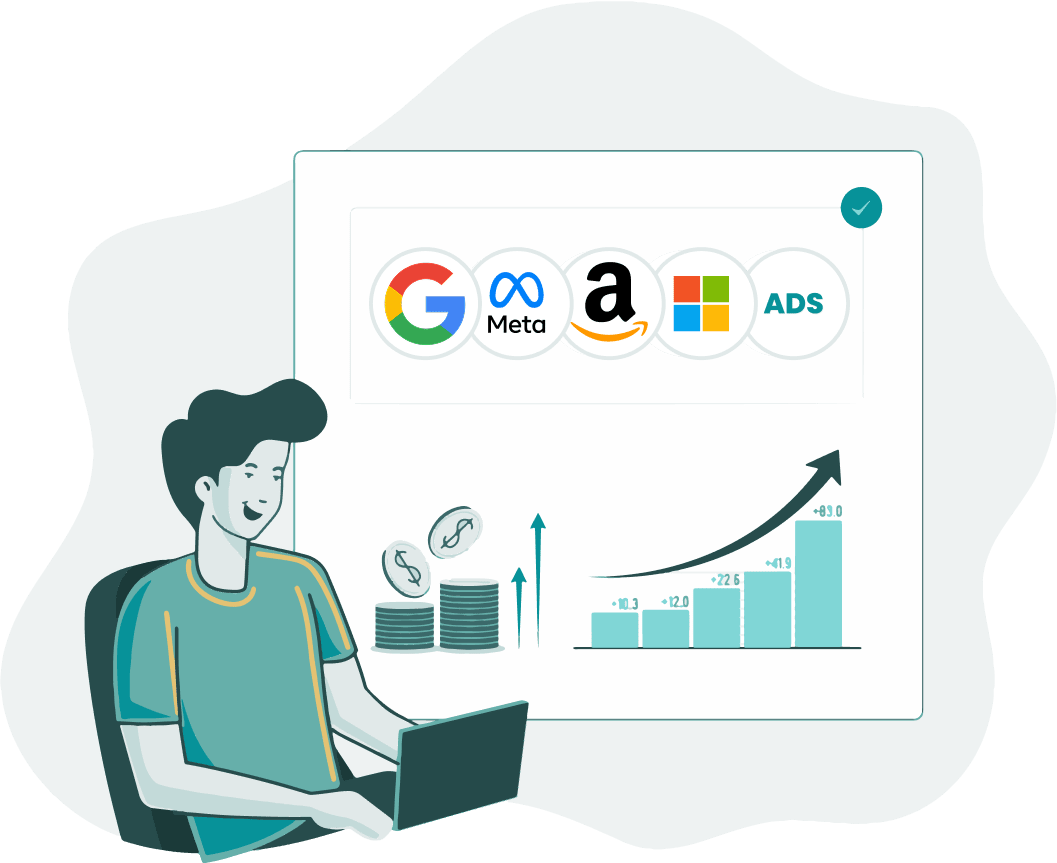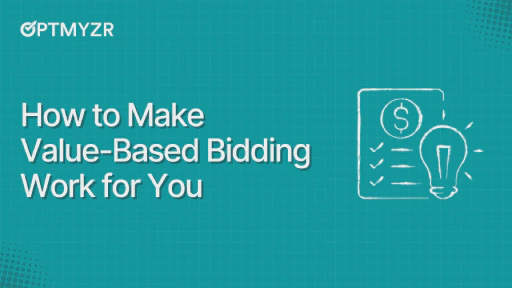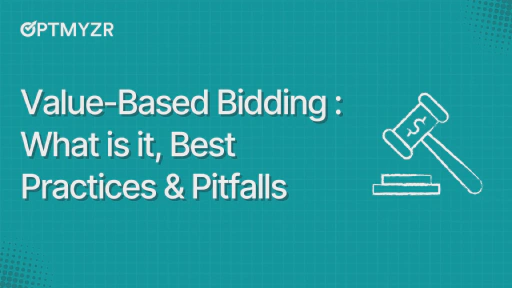Most modern marketers are overloaded.
So when Google promised Smart everything—bidding, creatives, targeting—we jumped at it. And for good reason: automation works.
But the problem is it doesn’t work for you unless you tell it how to.
In a recent chat on our Automation Layering Masterclass podcast with our Co-founder & CEO, Frederick Vallaeys, Matthieu Tran-Van walked through four automation plays he uses with his ecommerce clients that actually make automation predictable and profitable.
Each one adds a layer of governance on top of Google’s AI, so you keep scale and control, not one or the other.
This post breaks down those plays in detail. You’ll see where to use Optmyzr tools, which metrics to track, and how to know if automation is helping or quietly bleeding margin.
Let’s dive in.
Play 1: Make Broad Match work for you. Not against you.
Broad match is the PPC equivalent of a buffet: plenty of options, but plenty of regret. It can uncover high-intent queries you’d never target manually. But it can also torch your budget on irrelevant clicks.
Most teams either over-trust it (“Google knows best”) or over-fear it (“turn it off”). Matthieu’s approach sits in the middle.
He treats Broad as a discovery engine and layers in automation rules that decide what graduates to Exact and what gets quarantined.
So, what can you do about that?
1. Start broad, but track tightly.
Build a non-brand campaign using broad match keywords and Smart Bidding. This gives Google’s algorithm room to explore. Inside Optmyzr’s Rule Engine or Enhanced Scripts, set up a weekly rule to review conversion and PoNS (Profit on Net Spend) performance.
2. Promote winners, demote losers.
- If a broad keyword hits your conversion target and meets PoNS, clone it as an Exact match.
- If it misses the mark after a fixed spend threshold, demote to Phrase or pause entirely.
You can automate this logic inside Optmyzr’s Keyword Lasso or via a simple bulk rule.
3. Mine search terms and add structure.
Export weekly search terms directly into Optmyzr’s Search Term N-Gram tool.
- Promote high-performing terms to Exact.
- Add negatives to stop overlap.
- Tag everything with “Promote,” “Hold,” or “Exclude” labels for easy tracking.
4. Create a “Top Performer” campaign.
Move proven Exact keywords into a separate campaign with its own budget and stricter CPA or ROAS target. This isolates winning intent and gives you precise control over where to spend.
Why this approach works
Broad match is powerful when it’s supervised. The algorithm gets its exploration space, and you get rules that turn chaos into compounding performance.
Matthieu summed it up well: “Broad can scale profitably, but only if you teach it boundaries.”
This structure stops premature pausing, which is one of the most common PPC mistakes. It also feeds Smart Bidding cleaner data over time, improving learning cycles.
How to monitor it
Use a dashboard that shows:
- Spend split by match type (Broad vs Exact vs Phrase).
- ROAS and PoNS trends over time.
- New keyword promotions each week.
Optmyzr’s PPC Investigator and Rule Engine dashboards can visualize this automatically, so you can track promotion/demotion impact without pulling a dozen manual reports.
Pro tip: Broad takes patience. Matthieu recommends letting a keyword accumulate at least 30–50 conversions before promotion or demotion. Anything less is noise masquerading as insight.
Play 2: Turn DSA into a profit engine
Dynamic Search Ads are supposed to be plug-and-play: Google crawls your site, matches search queries to relevant pages, and auto-writes headlines. In reality, it’s more like giving the algorithm a copy of your sitemap and hoping it reads between the lines.
If your site structure is messy, or if titles, metadata, or stock info are outdated, DSA targets poorly and writes headlines that miss the mark.
Matthieu’s fix: don’t rely on Google’s crawl. Feed DSA your business data instead.
Use this system
1. Start with a structured feed.
Build a live spreadsheet with six essentials:
URL | Product Name | Price | Availability | Rating | Unique Selling Points
This becomes the truth source for your ads. Pull it straight from your product catalog or ecommerce CMS.
2. Generate campaigns automatically.
Use a tool like Optmyzr’s Campaign Automator or a lightweight script to create DSA campaigns and ad groups from that feed. Each row becomes an ad group with its own dynamic headline and landing page. Update the feed daily so inventory, pricing, and messaging stay in sync.
3. Add product priority.
Include a simple Priority column: P1, P2, P3. Optmyzr’s Rule Engine can then shift budgets automatically toward high-margin or strategic products while capping spend on clearance or low-margin items.
4. Track Conversions per Impression (CPI).
CPI = Conversions ÷ Impressions. It’s a calculated KPI, not a default Google metric, but it’s a reliable proxy for ad-to-intent fit. Matthieu uses it to gauge whether DSA headlines are attracting the right searchers, not just any searchers.
5. Refresh and review.
Every month, audit pages with high impressions but weak CPI. Tighten targeting by excluding those URLs or rewriting their titles and meta descriptions.
Why this works
Dynamic Search Ads become smarter when they pull from your structured business data. You still let automation handle ad serving and bidding, but you decide the inputs that shape every headline and click.
Matthieu calls this “feeding Google better food.” Better data in, better performance out. And because your feed updates automatically, it scales without constant hand-holding.
How to monitor it
Inside Optmyzr:
- Use the Campaign Performance Dashboard to track CPI and conversion value trends for each DSA group.
- Set up an Automated Rule that flags ad groups with high spend and below-target CPI.
- Visualize spend by Priority label to ensure your budget is backing the right products.
Pro tip: Don’t force DSA to compete with Search campaigns on the same terms. Use URL or category exclusions so DSA covers the long-tail gaps, where Smart Bidding’s discovery mode can find profitable queries you never wrote down.
Play 3: Bid for profit, not just ROAS
ROAS makes people feel safe. It’s neat, comparable, and fits perfectly in a dashboard.
But the catch is that it hides profit.
A 900 % ROAS can still lose money if margins are thin or shipping costs creep up. Smart Bidding will happily chase that vanity number because you told it to.
Why a higher ROAS is not always a good idea?
Matthieu’s fix is simple: add a profit lens. Track how revenue per click compares with what you’re paying for that click.
Use this system
1. Set your PoNS target.
Profit on Net Spend (PoNS) = (Net profit ÷ Ad spend).
Establish a baseline for each campaign or portfolio: 5 %, 10 %, whatever actually keeps the lights on.
2. Track the ratio that matters.
Each week, calculate:
RPC = Revenue ÷ Clicks
CPC = Cost ÷ Clicks
Efficiency ratio = RPC ÷ CPC
This ratio shows whether you’re buying clicks that return more value than they cost.
3. Apply the four-quadrant framework.
PoNS vs Target | Efficiency Ratio Trend | Action |
Below target | Falling | Cut bids hard |
Below target | Rising | Trim lightly |
Above target | Rising | Scale up |
Above target | Falling | Scale cautiously |
Build these as automated rules or use Optmyzr’s Rule Engine to trigger bid adjustments automatically.
4. Audit monthly.
Revisit PoNS targets by margin tier. Merge thin categories; give high-margin sets more freedom to bid. Use Optmyzr’s Account Dashboard to compare ratio trends over time.
Why this works
Smart Bidding optimises for conversions or value; it has no idea whether those conversions are profitable. By layering this ratio check on top, you give automation a boundary line.
As Matthieu puts it, “Direction beats precision. If efficiency is climbing, lean in; if it’s falling, defend margin.”
How to monitor it
- Track RPC/CPC trendlines alongside ROAS in your performance reports.
- Use Optmyzr’s Custom Metrics to display PoNS and efficiency ratio directly inside dashboards.
- Set weekly email alerts when the ratio drops below the threshold.
Pro tip: Don’t chase static targets. Update PoNS goals every quarter as costs and margins shift; otherwise, automation keeps driving by an outdated map.
Play 4: Bring business data into your ads
Google Ads sees clicks, conversions, and revenue. But it doesn’t see your profit margin, inventory level, or stockouts.
That blind spot is why automation sometimes pours budget into low-margin products or keeps spending on items that are already sold out.
Matthieu’s fix: Feed Google your business data, so automation finally understands what matters to your bottom line.
Use this system
1. Start with your “truth data.”
Build a lightweight feed with the metrics Google can’t see:
SKU | Margin | Stock | Competitor Price | Priority | Seasonality Flag
This can live in a Google Sheet, data warehouse, or your Merchant Center supplemental feed.
2. Use Merchant Center custom labels.
Push these business signals into your Shopping or Performance Max campaigns with custom labels like:
- margin_high, margin_med, margin_low
- inventory_low, inventory_clearance
- priority_promo
Update the feed nightly or whenever inventory changes.
3. Segment campaigns by business priority.
Inside Google Ads or Optmyzr:
- Allocate larger budgets and more aggressive targets to margin_high or priority_promo items.
- Cap spend or exclude inventory_low items.
- Use Optmyzr’s Shopping Campaign Management tool to create segmented campaigns in bulk.
4. Add automation rules for dynamic rebalancing.
In Optmyzr’s Rule Engine, write simple checks like:
- “If label = margin_low and CPA > target, reduce budget 25 %.”
- “If label = priority_promo and PoNS > goal, increase budget 20 %.”
These rules let campaigns self-correct as product economics shift.
5. Review and refresh.
Use Optmyzr’s Shopping Dashboard to visualise spend and ROAS by label. Watch for categories with falling margins or rising costs, then feed those changes back into your automation rules.
Why it works
Automation optimises toward what it can see. By giving it real business data, you replace “best guess” decisions with signals that reflect profit. When margin and stock data flow into campaigns, Smart Bidding stops treating all SKUs as equal and starts prioritising the ones that make money.
As Matthieu puts it: “You can’t beat identical catalogs with identical campaigns.” Business data is your differentiator.
How to monitor it
- Create a dashboard view showing spend, revenue, and PoNS by margin label.
- Set up weekly feed audits to flag missing or outdated labels.
- Add a recurring Optmyzr alert for “spend on inventory_low items > $X” to catch leaks fast.
Pro tip: Start simple: add one business signal (like margin tier) before layering more (like stock or competitor price). Steady feedback is the key, not data overload.
Structure wins
Automation does exactly what you tell it to do, and nothing more. That’s why Matthieu’s four plays work: they give automation a framework for judgment.
- Broad match discovers new demand.
- DSA expands your reach with accurate, data-fed ads.
- Profit-first bidding keeps spend tied to real money, not vanity ROAS.
- Business data integration makes every automated decision profit-aware.
Together, they turn Google’s systems from a black box into a controllable growth loop. You’re not fighting the algorithm; you’re managing it.
So the next time you build or audit an automated campaign, ask one question: “Does the system know what success looks like for my business?”
If the answer’s no, start with one of these plays. Then teach the machine what good looks like, and let it scale that.
Matthieu’s strategies are a testament to how automation can simplify complex PPC management. By leveraging Optmyzr’s tools, he has achieved remarkable results while avoiding burnout.
Not an Optmyzr customer yet? Now’s the best time to sign up for a full functionality 14-day free trial.
Thousands of advertisers—from small agencies to big brands—worldwide use Optmyzr to manage over $5 billion in ad spend every year.
You will also get the resources you need to get started and more. Our team will also be on hand to answer questions and provide any support we can.









